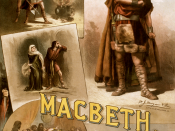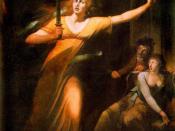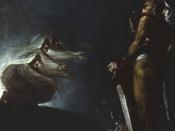For centuries evil was defined by human preoccupation, and it was often indicated in the English literature. From Beowulf to Macbeth, people's perception on the nature of evil had matured and became more complex.
In Beowulf's period, evil was simply defined based on outer appearances and actions. The author of Beowulf described the evil Grendel as a fearsome monster: 'He(with sharp claws)...snatched up thirty men, smashed them.' For the same reason, Grendel's mother was also considered evil although she merely wanted to revenge her son. The last evil character in the story was the Dragon. He killed the Geats and burned their homes with his breath of fire. Monster and evil certainly had the same meaning in the Pre-Christian time.
As Christian was introduced, a new definition of evil that concentrated on human values and thoughts had emerged. The Christian believed that the seven deadly sins were the cause of evil.
Thus in the play Macbeth, Macbeth's tragic flaws were actually the deadly sins. They were greedy and envy. Macbeth was not satisfied with his current position, 'Thane of Glamis,' and not even his newly gained 'Thane of Cawdor' would please him. He had only one thing on his mind, the throne. When he became the king, he envied Banquo's having heirs who would be rivals for the throne. The Christian also developed the theory of the great chain of being. It basically stated that a person could not and was not allowed to change his social status. Thus in the play, everyone eventually turned against Macbeth, who had broken the great chain of being by taking the throne from the rightful king. At the end, Macbeth died as an evil being who had broken all the Christian rules.
The nature of evil also became unclear as...


